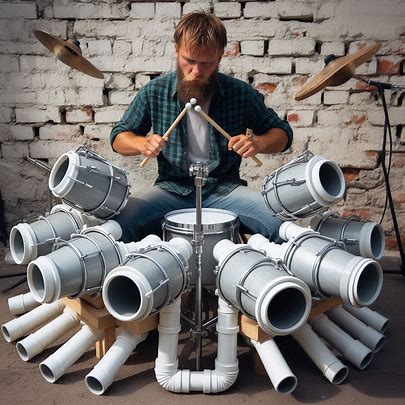Metal pipes can resonate like a bell. Wrenches clink with rhythm when dropped. Water running through spigots can mimic the sound of a soft rainstick. These simple truths are at the core of a niche but growing movement—turning everyday plumbing tools into real musical instruments.
This unexpected fusion of utility and creativity is captivating musicians and hobbyists around the world. From backyard tinkerers to avant-garde composers, people are discovering that a plumber’s toolbox holds the raw materials for a whole new genre of music (source: plombier).
The Sound of Steel and Water

At first glance, a pipe wrench or copper fitting may not resemble a musical instrument. But when you start tapping, scraping, or blowing through these items, something magical happens. Sound. Real, resonant, sometimes eerie, sometimes melodic sound.
For instance, long metal pipes can be cut and tuned to specific notes, much like organ pipes. Hit them with rubber mallets, and you get deep, booming tones. Smaller pipes can be used for higher pitches. Arrange them correctly, and you’ve got a DIY xylophone made entirely of plumbing parts.
Water also plays a major role. By adjusting the water flow in connected spigots, performers can create pitch-modulated sounds. It’s a mix between performance art and sound engineering, with experimentation at its core.
Musicians Who Think Like Engineers
This concept isn’t completely new. The Blue Man Group has long incorporated PVC piping into their performances, drumming out wild beats with nothing more than tubes and paddles. But now, more solo artists and bands are venturing into this experimental territory.
One Belgian sound artist, for example, built a full percussive rig using wrenches, elbow joints, and galvanized steel. He uses contact microphones to amplify the sounds and loop them live during his shows. It’s part industrial, part jazz, and entirely captivating.
Other musicians have used plumbing fixtures to create wind instruments. A simple S-bend pipe can become a horn when fitted with a mouthpiece. Play it like a trombone, adding a brassy, lo-fi edge to any performance.
Why Plumbing Tools? Why Now?
The rise of DIY culture and experimental music has encouraged creators to look beyond traditional instruments. Plus, something is charming and rebellious about making music from gear that wasn’t meant for it. It’s noise with intention. Music from chaos.
Also, the cost of entry is low. You don’t need to buy expensive equipment. Just head to a hardware store—or a plumber’s garage—and start playing around. You’ll be surprised by how musical these tools can be.
Tips for Making Your Own Plumbing Instruments
Interested in giving this a try? Here are a few simple ways to start:
1. Build a Pipe Drum Kit
Cut PVC pipes of different lengths. Mount them vertically and use paddles or rubber mallets to strike them. Each pipe will produce a different tone.
2. Turn a Wrench into a Percussion Piece
Try dangling various sizes of wrenches and striking them with sticks. Each one rings differently depending on its material and shape.
3. Experiment with Water Flow
Use spigots and valves to control water flow through a series of pipes. Capture the sound using a microphone and mix it into electronic music or ambient tracks.
It’s all about trial, error, and play. Don’t worry if it doesn’t sound “perfect.” That’s the point. The rawness, the industrial hums, the unexpected rhythms—they’re what make this kind of music so exciting.
READ ALSO: 10 Ways to Make Music a Core Element in Your Home Extension
Plumbing the Depths of Creativity
Turning plumbing tools into musical instruments isn’t just a fun weekend project. It’s a statement. A way to challenge the definition of music. A push toward seeing everyday things with fresh eyes and open ears.
So stop and listen next time you walk past a construction site or a plumbing supply aisle. There might be a song hiding there—waiting for someone curious enough to find it.
